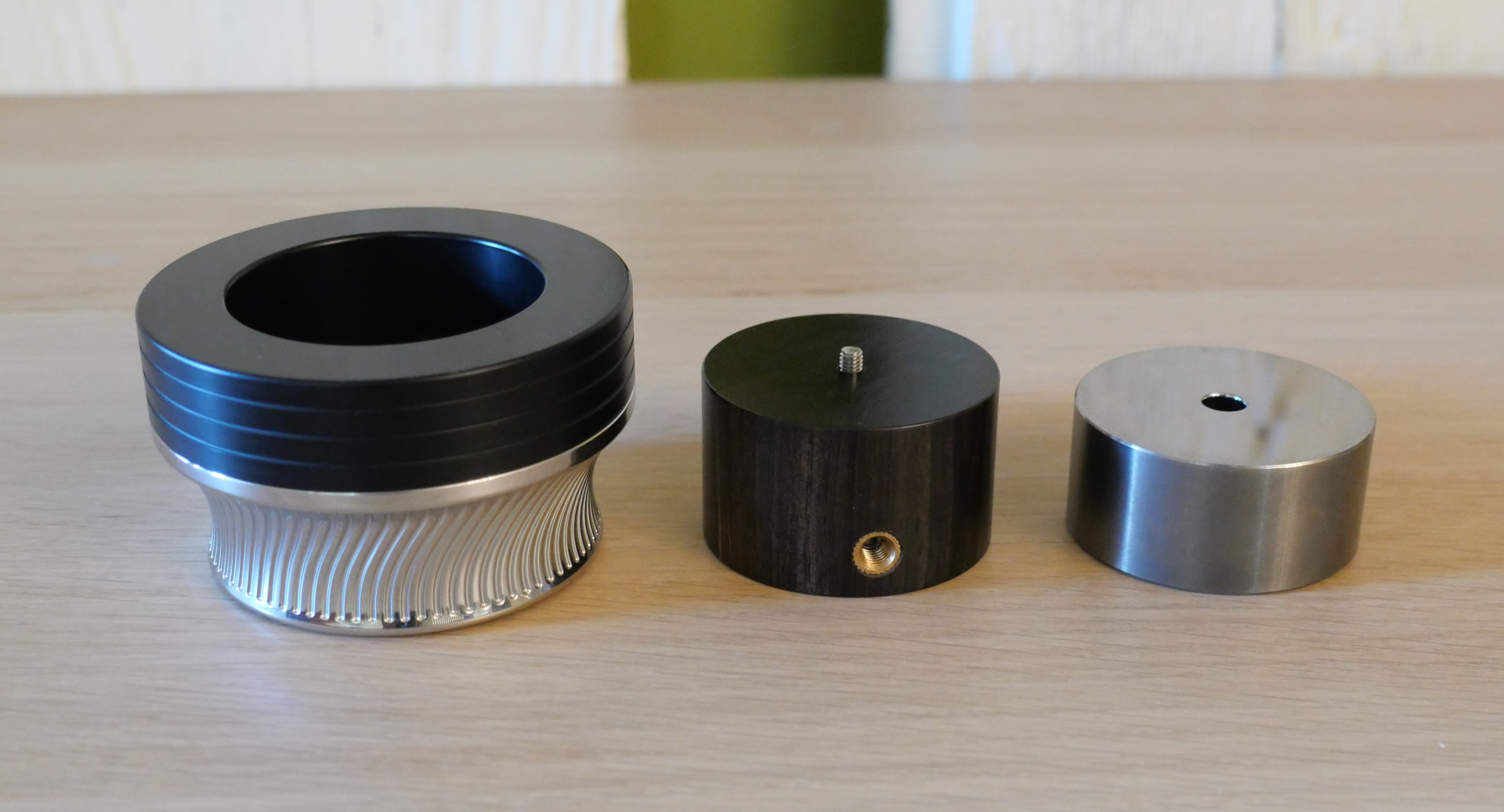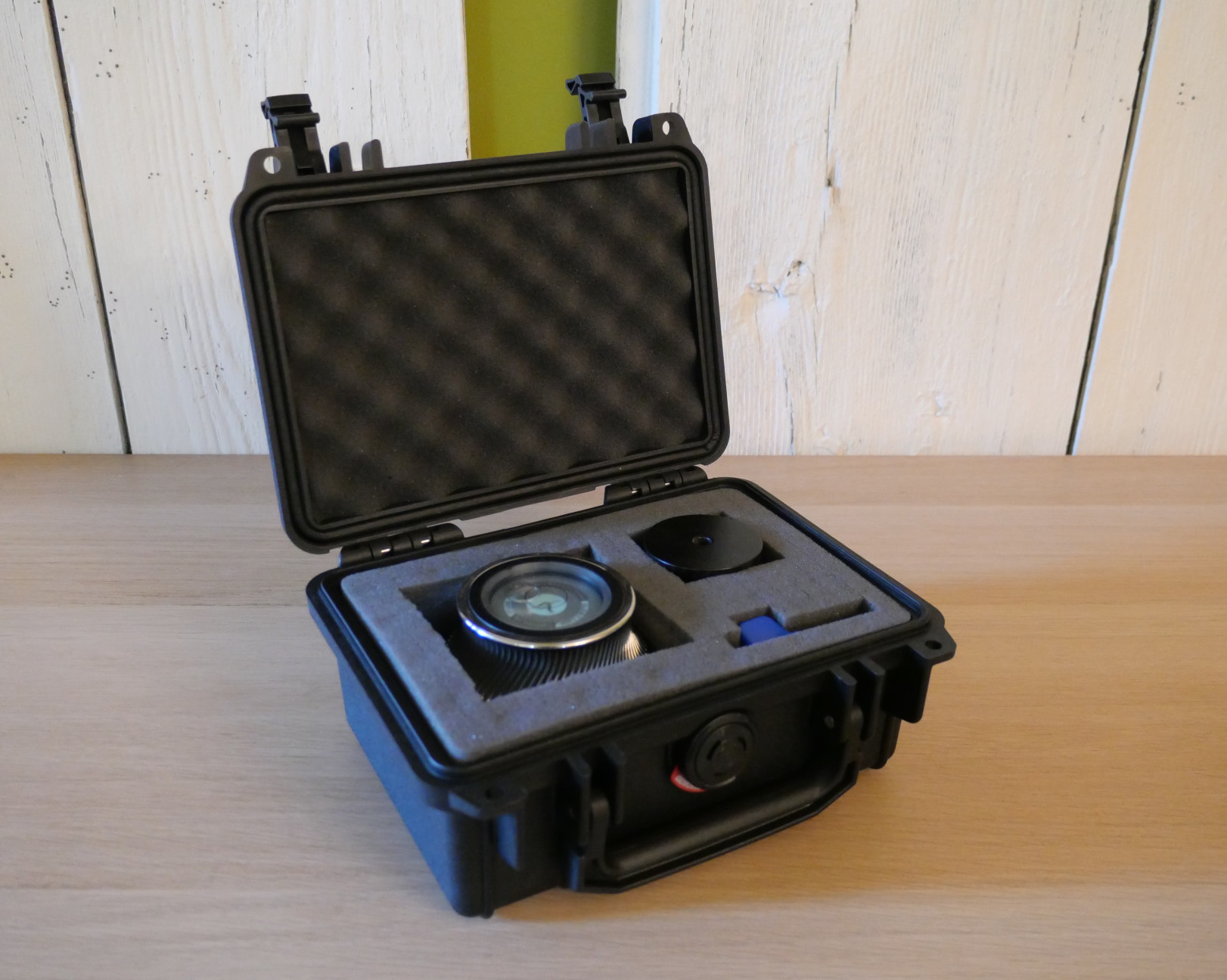
The Blackwood ‘puck’ is perforated by three lateral brass inserts, each carrying a grubscrew to facilitate centring. These don’t feature on the Tungsten ‘puck’ as presumably the material is considered mechanically stable enough to hold concentricity. Bolt the outer sleeve/core and the selected insert together and you have a three-part construct that will, by its very nature, resist and dissipate resonance. There may well be more elements inside (just take a look at the cross-section through a RevOpod – https://www.arya-audio.com/revopod) but I for one am not going to dismantle something put together as carefully as the Orbius to find out.

The cute little Pelican case in which the review sample Orbius arrived (well, what did you expect for almost three-grand) contains the tallest body option and a pair of cylinders, one in Tungsten, one in Blackwood (Mpingo). One or other of these is fitted into the well and fixed by a Torx screw, accessed through the central spindle hole. Described as the Demo Set, the combination covers most of the situations the Orbius is likely to encounter, allowing prospective owners to select the component combination that best suits their particular situation.
More than meets the eye…
What is interesting to note here is not just the variable mass of the Orbius, but the way in which it interfaces with the ‘table and the record. On the review sample, the clamp’s body weighs in at 379g. The Blackwood/Mpingo puck weighs 87g and the Tungsten one, 689g. That gives combined weights of 466g or 1068g but those reflect the tallest body, able to accept a 28.5mm tall spindle. The body is available in two shorter versions, which clear 22mm or 17.5mm spindles. Weights for the shortest clamp are 390g and 910g. If you are going to try an Orbius, measure your ‘table’s spindle height first: there are few things that look quite as sad (or make you feel quite as dumb) as a record weight dangling above the record it is supposed to be weighting!
With the tall body supplied for review, the Mpingo puck extends to virtually the full depth of the weight’s internal well. The Tungsten puck doesn’t – stopping around 7mm short. Presumably this is a weight issue: the Tungsten core is already seriously heavy. Increase its depth any more and you will increase the overall mass of the weight too, by no small amount. But what it does mean is a significant gap between the record label and the spindle hole. Whether your platter spindle is threaded or not, if you are using the tallest Orbius body, it will need to have at least 5mm of non-threaded shaft above the record (rather than above the platter) for the weight to locate and be centred properly. In the case of the VPI platter, this was marginal, precluding the use of an (additional) mat between the metal platter surface and the record. That’s how VPI suggest you use their ‘tables, but it is, nevertheless, another thing to watch out for and check. Of course, if you are using the Mpingo puck or one of the shorter bodies, it isn’t an issue.

